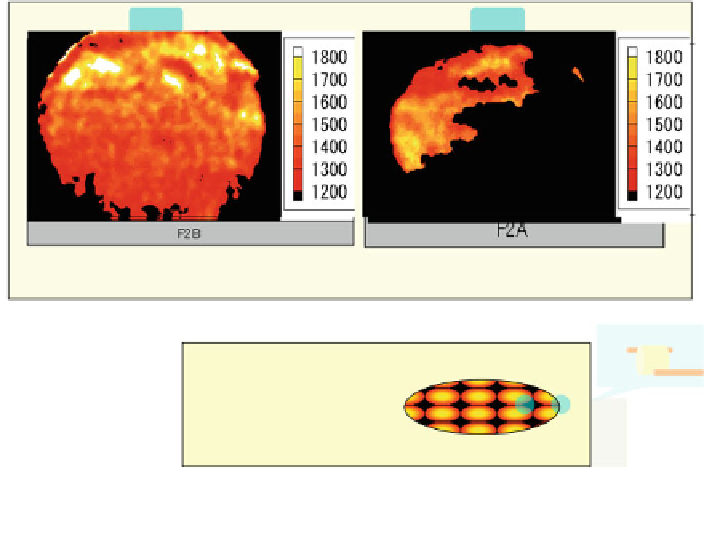Environmental Engineering Reference
In-Depth Information
B
A
[K]
[K]
ca.30 cm
ca.30 cm
ca.3 m
[NO
x
] in the exhaust
24
Burner
fuel
33 ppm
0.6 m
0.5 m
Air
fuel
B
1 m
A
furnace
8.0 m
Fig. 4 Soot temperature pro
les during diffusion HITAC
high temperature island was not steady but instantaneous leading to the low NO
x
level. During the diffusion combustion, the fuel and air are injected from distant
nozzles, followed by slow reactions due to a low oxygen concentration along with
mixing the gases.
Spectroscopic temperature measurements were made for non- or semi-radiant
combustion
les
during coal gas premixed and diffusion combustions together with the thermo-
couple temperature pro
fl
flames. Figures
5
and
6
show the C
2
vibrational temperature pro
les, respectively.
The spatial resolutions of the spectroscopic temperature pro
les are much higher
than those obtained with the thermocouples. As in case of the heavy oil combustion,
highly structured temperature distribution is encountered during the premixed HI-
TAC, high-temperature zone localized around the injector while the temperature
uniformity is seen during the diffusion one.
The origin of the difference in the NO
x
level between the premixed and diffusion
HITACs was also surveyed by directly measuring of spontaneous emission of
radiation from thermally excited NO molecules in the HITAC
field. Figure
7
shows
the spectral intensity pro
les of NO spontaneous emission of radiation.
The combustion conditions are the same as in Figs.
5
and
6
.

























Search WWH ::

Custom Search